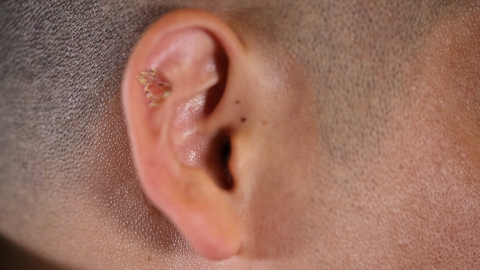What are the differences between skin tags and filiform warts?
Generally, although skin tags and filiform warts are both types of skin surface outgrowths, they differ significantly in terms of causes, appearance, growth location, texture, and risk of malignancy. The specific differences are as follows:

1. Causes: Skin tags are often associated with skin aging, friction or irritation, obesity, or changes in hormone levels. They are benign growths formed by excessive proliferation of skin connective tissue and are non-contagious. Filiform warts, on the other hand, are caused by infection with human papillomavirus (HPV). The virus can spread through contact and belongs to the category of viral infectious skin diseases.
2. Appearance: Skin tags are typically soft, flesh-colored or brown, appearing as spherical, bag-like, or stalked projections with a smooth surface, ranging in diameter from 1-2 millimeters to 1 centimeter. Filiform warts usually present as slender, thread-like projections, with a color similar to the surrounding skin or slightly brownish. Their surface is rough, with possible keratinization at the tip, and they appear more delicate overall.
3. Growth Location: Skin tags commonly develop in areas subject to frequent friction or skin folds, such as the neck, armpits, groin, under the breasts, and around the anus. Filiform warts typically appear on exposed areas that are prone to viral contact, including the face, neck, scalp, and back of the hands.
4. Texture: Skin tags are soft and elastic, with no significant roughness upon touch, and may slightly deform when pressed. Filiform warts are relatively harder in texture due to keratinization, with a rough surface that is less likely to deform when touched. In some cases, pressing them may cause mild discomfort.
5. Risk of Malignancy: Skin tags have virtually no potential for malignancy and, while they may persist long-term and affect appearance, they generally pose no serious threat to health. Although filiform warts are mostly benign, there is a very low risk of malignancy associated with HPV infection. If left untreated for a prolonged period, the virus may spread, leading to an increased number of warts.
When observing skin outgrowths in daily life, one can initially differentiate them based on the above characteristics. If removal is desired, it is recommended to seek services at a正规 medical facility to avoid self-treatment that may lead to infection or other complications.




